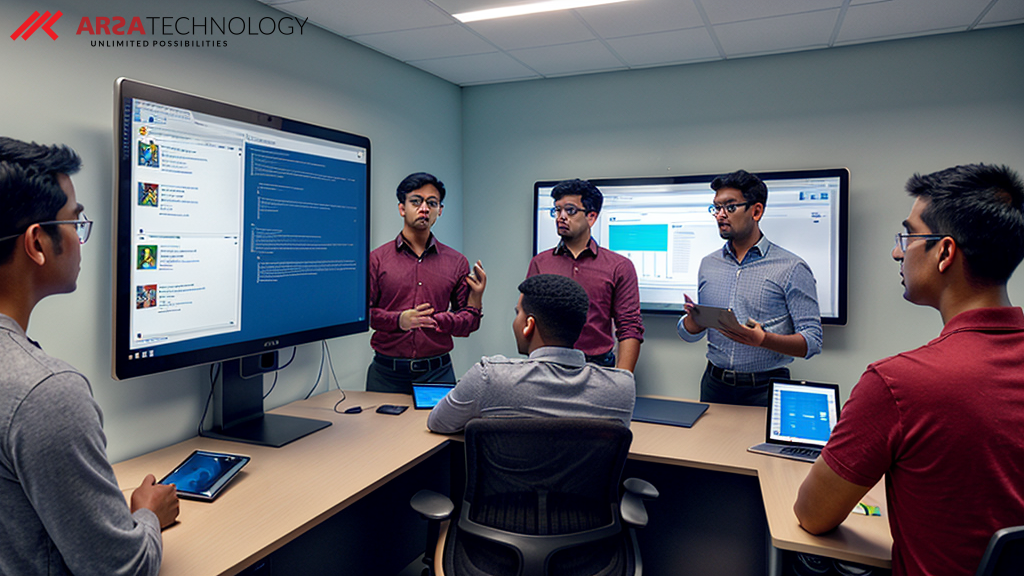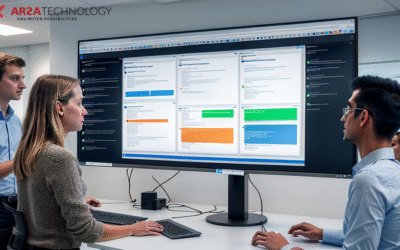Introduction: Overcoming Complex System Integration Needs in the Education Sector
The digital transformation of education has accelerated, placing interactive and accessible learning experiences at the forefront. Mobile applications, e-learning platforms, and digital textbooks are no longer just supplementary tools; they are core components of modern pedagogy. A crucial element enhancing these platforms is in-app voice guidance, offering everything from pronunciation assistance in language learning to narrated content for visually impaired students. However, for many software developers and solutions architects in the education sector, implementing robust Text-to-Speech (TTS) capabilities often collides with a significant hurdle: complex system integration needs.
Integrating advanced voice synthesis into existing educational applications can be a daunting task. Traditional approaches often involve cumbersome SDKs, platform-specific code, and extensive development cycles, diverting valuable resources from core product innovation. This article delves into the critical considerations for choosing a Text-to-Speech API, specifically addressing how ARSA Technology’s solution is engineered to simplify these integration complexities, empowering educational platforms to deliver superior voice-guided experiences with unprecedented ease. We will explore how a well-chosen TTS API can not only streamline development but also unlock new pedagogical possibilities and drive significant return on investment.
Understanding the Demand for Voice Guidance in Education
The pedagogical benefits of voice guidance in educational applications are profound and multifaceted. For language learners, accurate pronunciation and auditory reinforcement are indispensable. For younger students, narrated stories and interactive instructions can significantly improve engagement and comprehension. Furthermore, voice synthesis is a cornerstone of accessibility, providing crucial support for students with visual impairments, dyslexia, or other reading difficulties, ensuring equitable access to learning content.
The global push for inclusive education and personalized learning pathways has amplified the demand for sophisticated voice capabilities. Educational institutions and ed-tech companies are constantly seeking ways to make learning more interactive, adaptive, and accessible. In-app voice guidance transforms passive content consumption into an active, engaging experience, fostering better retention and deeper understanding. The challenge, therefore, is not just *if* to integrate TTS, but *how* to do so efficiently, reliably, and without overwhelming development teams with integration complexities.
The Integration Challenge: Why Traditional TTS Solutions Fall Short
For many organizations, the journey to integrate Text-to-Speech functionality into their educational applications is fraught with obstacles. The primary pain point revolves around complex system integration needs. Here’s why:
- SDK Overload and Platform Dependency: Many TTS solutions require developers to integrate large, platform-specific Software Development Kits (SDKs). This means writing distinct codebases for iOS, Android, web, and desktop applications, leading to duplicated effort, increased maintenance overhead, and inconsistent user experiences across platforms.
- Resource Intensive Development: Integrating complex libraries and managing their dependencies can consume significant developer time and resources. This diverts engineering talent from developing core educational features, slowing down product innovation and time-to-market.
- Scalability and Infrastructure Management: Self-hosting or managing on-premise TTS engines requires substantial infrastructure investment and ongoing maintenance. Ensuring high availability, low latency, and scalability to meet fluctuating user demands—especially during peak academic seasons—adds another layer of complexity.
- Maintenance and Updates: Keeping up with updates, bug fixes, and security patches for multiple SDKs and underlying TTS engines across various platforms is a continuous challenge, often leading to technical debt and potential vulnerabilities.
- Lack of Unified API Experience: When different TTS solutions are cobbled together for various parts of an application or different platforms, it results in a fragmented developer experience and makes it harder to maintain a consistent voice identity for the educational content.
These integration hurdles often lead to project delays, budget overruns, and a compromise on the quality of the voice experience, ultimately hindering the educational impact of the application.
ARSA Technology’s Text-to-Speech API: A Simplified Integration Pathway
ARSA Technology understands these challenges intimately. Our Text-to-Speech API is purpose-built to abstract away the complexities of voice synthesis, offering a streamlined, cloud-based solution that prioritizes ease of integration for the education sector. Instead of wrestling with bulky SDKs and intricate configurations, developers can leverage a simple, powerful API that handles the heavy lifting.
Our API design focuses on:
- Universal Accessibility: As a cloud-native service, ARSA’s TTS API offers a unified interface that works seamlessly across all platforms—mobile, web, and desktop—eliminating the need for platform-specific implementations. This dramatically reduces development time and ensures a consistent, high-quality voice experience for all learners.
- Rapid Deployment: The API’s straightforward integration process means developers can quickly embed natural-sounding voice guidance into their applications. This accelerates development cycles, allowing educational content creators and app developers to focus on pedagogy rather than plumbing.
- Scalability on Demand: Built on a robust cloud infrastructure, the ARSA Text-to-Speech API automatically scales to meet any demand, from a handful of users to millions. This eliminates the need for educational institutions to manage their own voice synthesis infrastructure, ensuring reliable performance even during peak usage.
- Natural-Sounding and Multilingual Voices: Beyond ease of integration, ARSA’s API delivers high-fidelity, natural-sounding voices that enhance comprehension and engagement. With extensive multilingual support, educational platforms can cater to a global audience, offering content in various languages and accents, ensuring inclusivity and broader reach. To see the API in action, try the Text-to-Speech API.
By choosing ARSA Technology, educational developers can bypass the most common integration pitfalls, allowing them to innovate faster and deliver more impactful learning experiences.
Key Considerations for Choosing a Text-to-Speech API in Education
When evaluating Text-to-Speech APIs for educational applications, several factors extend beyond basic functionality to encompass strategic business value:
- Ease of Integration: This remains paramount. A well-designed API with clear documentation and a straightforward integration process significantly reduces development costs and accelerates time-to-market. Look for solutions that offer a simple, unified interface rather than complex, platform-dependent SDKs.
- Voice Quality and Naturalness: For educational content, robotic or unnatural voices can detract from the learning experience. Prioritize APIs that offer human-like intonation, rhythm, and clarity, ensuring that the voice guidance is engaging and easy to understand.
- Multilingual and Accent Support: Global education demands support for multiple languages and regional accents. An API that provides a rich library of voices across different locales is essential for reaching diverse student populations and for language learning applications.
- Scalability and Reliability: Educational platforms often experience fluctuating user loads. The chosen API must be able to scale seamlessly to handle peak demand without performance degradation, ensuring a consistent and reliable experience for all learners.
- Security and Compliance: Protecting student data is critical. Ensure the API provider adheres to stringent security protocols and relevant data privacy regulations, especially when dealing with sensitive educational content.
- Cost-Effectiveness and Transparent Pricing: Evaluate pricing models carefully. A transparent, usage-based model allows for predictable budgeting and ensures that costs scale with actual usage, providing better ROI. Consider the total cost of ownership, including development, maintenance, and infrastructure.
- Developer Support and Documentation: Responsive developer support can be invaluable when encountering integration challenges or needing assistance. Comprehensive documentation, tutorials, and a dedicated support team ensure a smooth development journey. Should you have any questions or require assistance, please don’t hesitate to contact our developer support team.
Beyond Integration: Unlocking Educational Value with ARSA’s TTS API
While simplifying integration is a core benefit, the strategic value of ARSA Technology’s Text-to-Speech API extends far beyond mere technical implementation. It empowers educational platforms to achieve significant business outcomes and enhance their competitive edge:
- Enhanced Learning Experiences: By providing clear, natural voice guidance, educational apps can offer personalized learning pathways, improve comprehension for complex subjects, and make learning more interactive and enjoyable. This directly translates to higher student engagement and better academic outcomes.
- Broadened Accessibility: Our TTS API makes educational content accessible to a wider audience, including students with visual impairments, learning disabilities, or those who simply prefer auditory learning. This commitment to inclusivity not only aligns with modern educational values but also expands the potential user base for educational products.
- Global Market Expansion: With robust multilingual support, ARSA’s API enables educational platforms to easily localize content for international markets. This opens up new revenue streams and allows institutions to reach students worldwide without the prohibitive costs of human voice-over artists for every language.
- Developer Efficiency and Innovation Focus: By offloading the complexities of voice synthesis, development teams are freed from integration headaches. This allows them to allocate more resources to developing innovative pedagogical features, improving user interfaces, and focusing on the core value proposition of their educational applications.
- Competitive Differentiation: Educational apps that offer superior, seamlessly integrated voice guidance stand out in a crowded market. This technological advantage can attract more users, secure partnerships, and reinforce a brand’s reputation as a leader in educational technology.
ARSA Technology is committed to providing a comprehensive suite of AI solutions. You can explore our full suite of AI APIs to discover how our offerings can further enhance your educational platforms.
A Comparative Look at TTS API Solutions
When considering Text-to-Speech solutions, the landscape typically includes a few categories, each with varying integration complexities and benefits:
- Open-Source Libraries: While seemingly cost-effective upfront, these often come with significant integration overhead, require extensive maintenance, and may lack the natural voice quality and scalability needed for enterprise-grade educational applications. The burden of managing infrastructure and ensuring reliability falls entirely on the development team.
- General Cloud Provider APIs: Major cloud providers offer TTS services. While powerful, their general-purpose nature might mean less specialization for specific industry needs like education. Integration can still be complex, and pricing models might be less transparent or optimized for specific use cases, potentially leading to higher long-term costs.
- Specialized API Providers (like ARSA Technology): These providers focus on delivering highly optimized, easy-to-integrate solutions for specific use cases or industries. ARSA Technology’s TTS API is designed with a deep understanding of developer needs and business outcomes, offering a streamlined integration experience, superior voice quality, and dedicated support, all while being built for scalability and reliability. This specialization means less integration pain and more focus on delivering value.
Choosing a specialized provider like ARSA Technology means leveraging an API that is not just functional but engineered for efficiency, scalability, and ease of use, directly addressing the complex system integration needs that plague the education sector.
Implementing In-App Voice Guidance: A Strategic Approach
Successful implementation of in-app voice guidance goes beyond just selecting an API; it requires a strategic approach.
1. Needs Assessment: Clearly define the specific use cases for voice guidance within your educational app and the languages required.
2. API Evaluation: Compare APIs based on ease of integration, voice quality, multilingual support, scalability, and pricing. Prioritize solutions that offer a unified, cloud-based approach to minimize integration complexity.
3. Pilot Integration: Start with a pilot project to test the chosen API’s integration into a small part of your application. This allows your team to familiarize themselves with the API and validate its performance and ease of use.
4. Full-Scale Deployment: Once validated, proceed with full integration across your application, leveraging the API’s capabilities to enhance various learning modules and features.
5. Monitoring and Optimization: Continuously monitor API performance and user feedback. ARSA Technology’s robust infrastructure ensures high availability and low latency, but ongoing evaluation helps refine the voice experience.
By adopting this strategic approach and partnering with a provider like ARSA Technology, educational organizations can transform their applications with powerful, natural-sounding voice guidance, overcoming integration challenges and focusing on their core mission: educating the next generation.
Conclusion: Your Next Step Towards a Solution
The demand for engaging, accessible, and interactive educational content is undeniable, and in-app voice guidance is a pivotal component of this evolution. However, the path to integrating such sophisticated capabilities has historically been riddled with complex system integration challenges, diverting precious developer resources and hindering innovation.
ARSA Technology’s Text-to-Speech API offers a clear solution, designed from the ground up to simplify this process. By providing a highly accessible, scalable, and natural-sounding voice synthesis service, we empower developers and product managers in the education sector to bypass integration hurdles. This allows them to focus on what truly matters: creating compelling learning experiences, enhancing accessibility, and expanding their global reach. Choosing ARSA Technology means investing in an API solution that not only meets your technical requirements but also drives significant business value, ensuring your educational platforms remain at the forefront of digital learning.
See Why ARSA is the Right Choice for Your Business.
Don’t just take our word for it. Schedule a free, no-obligation consultation with our API experts to discuss your specific needs and get a personalized performance and ROI analysis.







